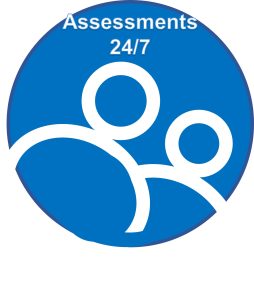Published with Permission from Assessments 24/7.

This is a Monday blog series; our regular coaching blog will be published on Thursday’s.
As a value add in this blog series, the focus here is a how to guide for coaching, praising, and challenging each of the DISC styles.
Dominance – High “D” Style
- Talk in terms of bottom line and achievement
- Zero in on results with quick benefit statements
- Invite the analysis and brainstorm solutions for them to approve or reject
- Explore choices backed with enough data and analysis to make an intelligent decision
- Use Feedback Questions to assist in clarifying the details and time frames
- Use Acknowledge-Clarify-Respond when encountering resistance
- Let them take the lead
Influence – High “I” Style
- Interact as you perspective with them; use Feedback Questions to engage them
- Show that you are interested in them; let them talk and be enthusiastic
- Illustrate ideas and perspectives with stories and emotional descriptions that can relate to their interests
- Use Feedback Questions to assist in summarizing details and direct these toward mutually agreeable objectives and action steps
- Invite ideas that help them to increase their prestige, image, or recognition
Steadiness – High “S” Style
- Show how you will support and assist
- Use Feedback Questions to assist in presenting new ideas in a non-threatening way
- Clearly define their roles and goals plus include specific expectations of them
- Explain why change may be necessary and how long the changes will take
- Show the appropriate steps to follow
- Use Acknowledge-Clarify-Respond when encountering resistance
- Avoid rushing them and offer personal, concrete assurances
Conscientious – High “C” Style
- Invite review of written data
- Value facts, specifications and data
- Allow them to think, inquire, and check before they make decisions
- Use Feedback Questions to assist in providing explanations and rationale
- Explore the pros and cons and the complete story
- Ask about follow-through
- Use Acknowledge-Clarify-Respond when encountering resistance
How to praise the four styles
Dominance – High “D” Style
- Be specific enough for them to feel comfortable, but don’t overwhelm
- Focus praise on their accomplishments, results, and achievements
- Ask them specifically how they like to receive praise
- Get to the point
- Give them your time and attention
- Use Coaching Moments to “praise in the moment”
Influence – High “I” Style
- I’s are concerned about what others think about them
- Give positive recognition and reinforcement
- Use specific praise, including people, when appropriate
- Ask them how they like to receive praise
- Be excited and enthusiastic
- Support them looking good
- Give them your attention, time, and presence
- Use Coaching Moments to praise “in the moment”
Steadiness – High “S” Style
- Ask them how they like to receive praise
- Take into consideration their motivation to seek security and please other people
- Develop trust, friendship, and credibility at a relatively slow pace
- Offer personal, concrete assurances
- Communicate in a consistent manner on a regular basis; compliment progress
- Use Coaching Moments to “praise in the moment”
Conscientious – High “C” Style
- Don’t praise with too much enthusiasm
- Ask them how they like to receive praise
- Be specific and clear on the reasons for giving them praise
- Don’t try to impress them
- Match their low emotional tone
- Use Coaching Moments to “praise in the moment”
How to challenge the four styles
Dominance – High “D” Style
- Challenge them to more realistically gauge risks
- Help them to use more caution and deliberation before deciding
- If appropriate, help them to more effectively follow rules and procedures
- Encourage them to look for ways to recognize others and solicit their opinions and contributions
- Ask them to give others the reasons for decisions
- Help them to give more attention and respond to others’ emotions
Influence – High “I” Style
- Help them to prioritize and organize
- Encourage them to see tasks through to completion
- Work to view people versus tasks more objectively
- Help them to avoid overuse of giving and taking advice
- Challenge them to keep track of details
Steadiness – High “S” Style
- Work with them to develop shortcuts and eliminate unnecessary steps
- Help them accept sincere praise and feel appreciated
- Show them there is often more than one approach to take
- Challenge them to develop an acceptance to some risks and changes
- Encourage them to speak up and share their thoughts and feelings
- Work with them to modify their inclination to do what others tell them
Conscientious – High “C” Style
- Ask them to share their knowledge and expertise with others
- Develop a balance between sensitivity to people and task accomplishment
- Encourage them not to take themselves “too seriously and critically”
- Challenge them to develop priorities and not categorize most items as “high priority”
- Help them to be transparent in sharing their plans for achieving their goals with you
- Coach them on praising others, when appropriate
In the next blog, tips on leaving voice messages or sending emails are provided.





